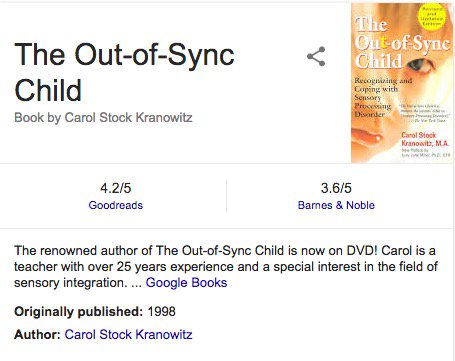Questions about Sensory Processing Disorder and Behaviour
Professionals Answer Your Questions about Sensory Processing Disorder
In my role as behaviour lead at my school I get lots of questions about sensory processing disorder (SPD). I am increasingly interested in the impact of sensory processing on learning, engagement and what we perceive as challenging behaviour. I wanted to find out more so asked some questions of those supporting children with SPD. This is a breakdown of some of the things I was able to take away from the question and answer session.
What is the best description of Sensory Processing Disorder?

What is the best description of Sensory Processing Disorder?
There is a good definition from Sensory Health “Sensory processing (originally called “sensory integration dysfunction” or SID) refers to the way the nervous system receives messages from the senses and turns them into appropriate motor and behavioural responses.” so when you have an issue with processing these inputs it may become overwhelming.
Sensory Spectacle added “Each of the 7 senses may be over (hyper) or under (hypo) responsive and may fluctuate and mix throughout a day. “
Jules Darby shared this Youtube clip explaining Sensory Processing disorder from a child’s perspective. It is really useful for gaining a quick understanding of SPD.
How Can we Identify The Stimuli That Cause Problems for Children with SPD?


A Sensory Checklist to Identify SPD issues.
The sole recommendation here revolves around observation and understanding the child. In my quest, I’ve come across Pearson’s sensory profile. It piqued my interest, and I’m curious to learn about the tools others employ.
What Adaptations Can We make To Our Rooms to Help With Sensory Processing?

There are lots of simple adjustments that we can all make that will make our rooms more accessible, and ensure learning can take place. A lamp using LED bulbs instead of fluorescent lighting. Reducing the number of displays. turning the projector or fans off. Here is a great resource that I found after the chat. Jeevan recommended these resources. Again from a STAR publication. We have now written a more in-depth article about classroom design and SPD.

What Resources Are Available to Learn More About SPD?

One of the most respected books on SPD is “The out-of-Sync” child an excellent book our SaLT suggested I read.
Sensory Spectacle recommended Rachel Schneider. and Joanna Grace in turn recommended their products (these are not paid links!)
I recommended reading or watching anything by Paul Issacs, a very good speaker. Book Him!!
What Calming Techniques Have You Found Effective?

A huge amount of practical ideas from this question. Enough for a whole blog. Please add your ideas to the comments section. Here are 7 calming techniques that can help with sensory processing difficulties (SPD):
- Deep pressure – Applying firm pressure through tight hugs, weighted blankets, or deep touches can soothe the nervous system.
- Proprioceptive input – Activities requiring whole-body engagement like swinging, heavy work, or bouncing can burn excess energy in a calming way.
- Breathing exercises – Practicing deep breathing, belly breathing, or breathing through different parts of the body helps relax both mind and body.
- Journalling or drawing – Expressing emotions or experiences through creative outlets can release stressful feelings.
- Guided imagery or visualizations – Mentally imagining calming scenes or scenarios engages the parasympathetic nervous system.
- Cold sensations – Brief contact with cool items like ice packs, chilled lotions, or cold drinks triggers the dive response for relaxation.
- Mindful fidgets – Occupying the hands with quiet, repetitive tasks like squeezing stress balls, twisting putty or clicking fidget toys provide grounding input.
- Calming music – Instrumental songs without lyrics at a slow tempo or incorporating nature sounds aid the transition to a relaxed state.
- Progressive muscle relaxation – Taking turns tensing and relaxing different muscle groups trains the body to release tension.
- Yoga or stretching – Gentle poses seamlessly joining movement and breath promote both physical and mental calmness.













Isn’t there some sort of website that can storify (not sure on name) a particular hash tag etc for after a particular chat? I’d be interested!
yes there is https://storify.com/ but cant embed on this version of wordpress.
Fab – I knew I heard the term somewhere!
Thank you for sharing